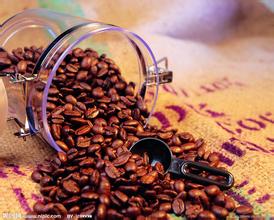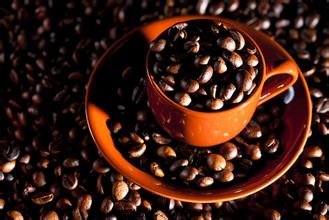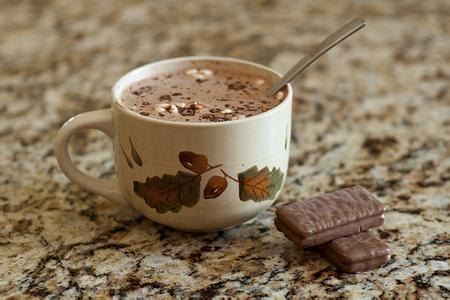Main coffee bean producing countries
Major coffee producing countries:
Brazil: Brazil accounts for about 1/3 of the world's coffee production. Although it occupies a very important position in the whole coffee trading market, because the Brazilian coffee processing industry has adopted the price strategy from the very beginning, that is, low price and massive planting, the coffee produced is of average quality and less excellent grade. it is generally considered to be an indispensable coffee bean in mixed blending.
Colombia:
Colombia is the second largest coffee producer in the world, accounting for about 12% of the world's total coffee production. Although the output ranking is lower than that of Brazil, its coffee beans are of good quality. Coffee trees are planted in the highlands, cultivated in a small area, harvested carefully, and processed in a wet manner, the coffee produced is beautiful in quality, rich in flavor and unique in flavor, which is very suitable for drinking alone or mixing.
Costa Rica:
The producing area can be divided into three areas: the Pacific coast, the Atlantic coast and the middle zone. All the coffee beans are quite large, fragrant with sour flavor, are first-class coffee beans, have a high rating.
Hawaii:
On the island of Cona, off the south coast of Hawaii, there is a well-known and traditional Hawaiian coffee-Hawaiian Cona. This kind of coffee bean grows only on Connor Island and is the only coffee produced in the United States. The volcanic rock and soil on the coast of Connor breeds this fragrant, mellow coffee. The top-grade Connor has a slight wine aroma in its moderate acidity, with a very rich palate and irresistible aromas. If you like to enjoy the voluptuous aroma of coffee before tasting coffee, or if you think Indonesian coffee is too strong, African coffee is too strong, and Central and South American coffee is too strong, Kang Na will be your best choice.
Due to the high cost of production, coupled with the popularity of professional coffee in the United States, hundreds of professional coffee roasters have a large demand for Cona coffee beans, making the price of "Hawaii Cona" in the market catch up with "Jamaica Blue Mountain". The best Cona coffee beans are becoming more and more difficult to buy.
Indonesia:
Sumatra and Java are the main producing areas. Sumatra coffee is best known for its rich and palatable high-end manning. On the other hand, the Arabica produced in Java has a good sour taste and is loved by the Dutch.
Jamaica:
Jamaica is the origin of the world's "Blue Mountain Coffee". The quality of coffee produced in Jamaica is polarized. the quality of coffee grown in the lowlands is very common and is only used to make scale. Why don't you take 5? Knock on the boy? Do you still want to travel to the emperor? Lan Xian offers Gang Mudou Sodium framing? BR >
Kenya:
Located in Kenya near East Africa, the coffee beans planted are high-quality Arabica varieties. The size of beans is medium to large, very thick and delicious, moderate acidity, according to the size of coffee beans is divided into seven grades, and according to the taste from top to bottom into six grades.
Ethiopia:
For the origin of coffee, beans are small and fragrant, and have a unique flavor, usually known as "mocha". Ethiopia is classified as 1-8 according to the ratio of defective beans.
Coffee producing areas:
Central America and the Caribbean:
Coffee occupies an extremely important economic position in Mexico, Panama and some countries along the Caribbean coast, and the coffee they produce (washed Arabica) is usually of high quality.
South America:
Brazil, the largest country in South America, with an average annual export of 20-30 million bags of coffee beans, is known as the world's largest coffee producer, accounting for about 1/3 of the world's total output. The main varieties are natural Arabica, followed by Colombia, Venezuela, Peru and Ecuador washed Arabica.
Africa:
Located in the hottest center of the tropics, most African countries produce Robasda varieties of coffee beans. Arabica coffee beans also grow particularly well in the high mountains of Kenya, Tanzania, Ethiopia and Cameroon.
Asia:
Due to advanced and excellent technology, the production ratio of "washed Arabica coffee beans", "washed Robastar coffee beans" and "natural Robastar coffee beans" has increased significantly in India and Indonesia.
In the world coffee market, Arabica coffee accounts for about 75-80%, while Robasda coffee accounts for 20-25%. Coffee production throughout the year is about 91 million bags, each bag 60 kilograms. Coffee production in Central and South America accounts for about 70% of the world's production, 20% in Asia and about 10% in Africa.

Important Notice :
前街咖啡 FrontStreet Coffee has moved to new addredd:
FrontStreet Coffee Address: 315,Donghua East Road,GuangZhou
Tel:020 38364473
- Prev

The basic knowledge of Coffee-Coffee growth habits
Coffee trees belong to the evergreen family of Akanaceae. They are tropical plants that are not cold. Most of them are planted in areas with elevations of 300,400m, and also in highlands with elevations of 2000-2500 meters. But those who plant on slopes above 1500 meters above sea level have better quality. Coffee trees are most suitable for growth when the average temperature is about 20 degrees Celsius, the annual precipitation is 1500-2000 mm, and the soil is permeable.
- Next

Introduction to the common types and names of coffee in China
It is not good to drink coffee while it is hot. If it is too hot, gently stir it with a coffee spoon to cool it, or wait for it to cool naturally before drinking. If you try to cool coffee with your mouth, remember that this is an impolite action. Coffee spoons are not full-time for scooping coffee with sugar and stirring coffee. It is impolite to use it to drink coffee in a mouthful, and don't use it to help.
Related
- Beginners will see the "Coffee pull flower" guide!
- What is the difference between ice blog purified milk and ordinary milk coffee?
- Why is the Philippines the largest producer of crops in Liberia?
- For coffee extraction, should the fine powder be retained?
- How does extracted espresso fill pressed powder? How much strength does it take to press the powder?
- How to make jasmine cold extract coffee? Is the jasmine + latte good?
- Will this little toy really make the coffee taste better? How does Lily Drip affect coffee extraction?
- Will the action of slapping the filter cup also affect coffee extraction?
- What's the difference between powder-to-water ratio and powder-to-liquid ratio?
- What is the Ethiopian local species? What does it have to do with Heirloom native species?

